Wikipedia:Picture of the day/November 2007
November 1
[àtúnṣe àmìọ̀rọ̀]| Àwòrán Ọjọ́ Òní | |

|
False color image of a landslide on Mars. The blue area represents the landslide debris, which has not yet been covered by the off-white Martian dust. The event took place in Zunil crater, a geologically recent (less than about 10 million years old) well-preserved 10-km impact crater and was most likely triggered by a Marsquake or a small impact event. Photo credit: Mars Reconnaissance Orbiter |
November 2
[àtúnṣe àmìọ̀rọ̀]| Àwòrán Ọjọ́ Òní | |
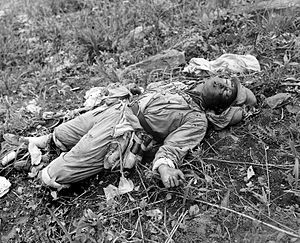
|
A Chinese soldier, killed by United States Marines in Korea during a Chinese attack following Operation Courageous, a military operation during the Korean War, designed to trap large numbers of Chinese and North Korean troops between the Han and Imjin Rivers north of Seoul. Massive Chinese reinforcements, totaling over 700,000 troops, overran Allied positions to the south but, by the end of May 1951, were progressively pushed back north of the Imjin. Photo credit: N.H. McMasters, United States Army |
November 3
[àtúnṣe àmìọ̀rọ̀]| Àwòrán Ọjọ́ Òní | |

|
An illustrated comparison of different types of bird beaks, displaying the different shapes that are a result of different feeding adaptations. Bird heads are not shown to scale. A- Nectar feeding (Sunbird) Image credit: L. Shyamal |
November 4
[àtúnṣe àmìọ̀rọ̀]| Àwòrán Ọjọ́ Òní | |

|
A juvenile male Beautiful Demoiselle (Calopteryx virgo), a European damselfly. The male has dark brown-black wingtips with blue veins. Immature often have much paler browner wings. They have metallic blue-green bodies and blue-green eyes. Photo credit: Michael Apel |
November 5
[àtúnṣe àmìọ̀rọ̀]| Àwòrán Ọjọ́ Òní | |

|
The Little Joe 1 was a solid fuel booster rocket that was designed to test the Mercury spacecraft Launch Escape and Recovery systems. The Little Joe program was developed to minimize the cost per launch for the numerous early test flights when compared to similar launch systems as the Atlas and the Redstone rockets. The name "Little Joe" comes from the game of craps, because a cross-section of the designers' blueprints of the four engines looked like four dots, or a double-deuce throw of dice, or in craps parlance, "Little Joe from Kokomo". Photo credit: NASA |
November 6
[àtúnṣe àmìọ̀rọ̀]| Àwòrán Ọjọ́ Òní | |

|
William Cody, better known as Buffalo Bill, was one of the most colorful figures of the American Old West, and mostly famous for the shows he organized with cowboy themes. He got his nickname for supplying Kansas Pacific Railroad workers with bison meat, having won the name from Bill Comstock in a bison killing contest. In addition to his documented service as a soldier during the Civil War and as Chief of Scouts for the Third Cavalry during the Plains Wars, Cody claimed to have worked many jobs, including as a trapper, bullwhacker, "Fifty-Niner" in Colorado, a Pony Express rider in 1860, wagonmaster, stagecoach driver, and even a hotel manager, but it's unclear which claims were factual and which were fabricated for purposes of publicity. Photo credit: Moffett |
November 7
[àtúnṣe àmìọ̀rọ̀]| Àwòrán Ọjọ́ Òní | |

|
Lightning is an atmospheric discharge of electricity, which typically occurs during thunderstorms, and sometimes during volcanic eruptions or dust storms. A bolt of lightning can travel at a speed of 220,000 km/h (136,000 mph), and can reach temperatures approaching 30,000ºC (54,000ºF), hot enough to fuse soil or sand into glass channels. Photo credit: Fir0002 |
November 8
[àtúnṣe àmìọ̀rọ̀]| Àwòrán Ọjọ́ Òní | |

|
A Bark Mimicking Grasshopper (Coryphistes ruricola), one of the many members of the family Acrididae, which comprises some 10,000 of the 11,000 species of the entire suborder Caelifera. This specimen is approximately 60 mm (2.4 in) in length Photo credit: Fir0002 |
November 9
[àtúnṣe àmìọ̀rọ̀]| Àwòrán Ọjọ́ Òní | |

|
A 3D projection of a tesseract performing a simple rotation about a plane which bisects the figure from front-left to back-right and top to bottom. Also called 8-cell or octachoron, a tesseract is the four-dimensional analog of the cube, where motion along the fourth dimension is often a representation for bounded transformations of the cube through time. The tesseract is to the cube as the cube is to the square. The tesseract is the four-dimensional hypercube, or 4-cube. Image credit: Jason Hise |
November 10
[àtúnṣe àmìọ̀rọ̀]| Àwòrán Ọjọ́ Òní | |

|
A scene from The Happy Land, an 1873 play by W. S. Gilbert and Gilbert Arthur à Beckett, showing the actors dressed as William Gladstone, Robert Lowe, and Acton Smee Ayrton. The play created a scandal due to its satirical portrayal of public officials, which was in violation of the rules against doing so then governing theatre in England. Illustration credit: D.H. Friston |
November 11
[àtúnṣe àmìọ̀rọ̀]| Àwòrán Ọjọ́ Òní | |

|
An 18th century map of the Iberian Peninsula illustrating various topographic features of the land. The Iberian Peninsula, or Iberia, is located in the extreme southwest of Europe, and includes modern day Spain, Portugal, Gibraltar and Andorra. Map credit: Robert Wilkinson |
November 12
[àtúnṣe àmìọ̀rọ̀]November 13
[àtúnṣe àmìọ̀rọ̀]November 14
[àtúnṣe àmìọ̀rọ̀]November 15
[àtúnṣe àmìọ̀rọ̀]| Àwòrán Ọjọ́ Òní | |
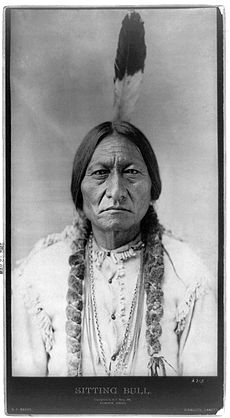
|
Sitting Bull was a Hunkpapa Lakota chief and holy man. He is notable in American and Native American history in large part for his major victory at the Battle of the Little Bighorn against Custer's 7th Cavalry, where his premonition of defeating them became reality. Even today, his name is synonymous with Native American culture, and he is considered to be one of the most famous Native Americans in history. Years later, he also participated in Buffalo Bill's Wild West show, where he frequently cursed audiences in his native tongue as they applauded him. Photo credit: D.F. Barry |
November 17
[àtúnṣe àmìọ̀rọ̀]November 18
[àtúnṣe àmìọ̀rọ̀]November 19
[àtúnṣe àmìọ̀rọ̀]November 20
[àtúnṣe àmìọ̀rọ̀]November 21
[àtúnṣe àmìọ̀rọ̀]| Àwòrán Ọjọ́ Òní | |
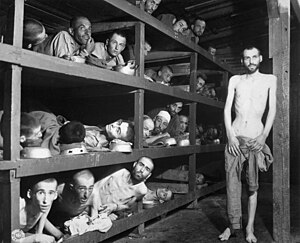
|
Slave laborers at Buchenwald, one of the Nazi concentration camps, at the camp's liberation in April 1945 by the United States Army's 80th Division. Some 250,000 people were incarcerated in Buchenwald. Although it technically was not an extermination camp, one estimate places the number of deaths in there at 56,000. Author and future Nobel Laureate Elie Wiesel is on the second row from the bottom, seventh from the left. Photo credit: Pvt. H. Miller, U.S. Army |
November 22
[àtúnṣe àmìọ̀rọ̀]| Àwòrán Ọjọ́ Òní | |
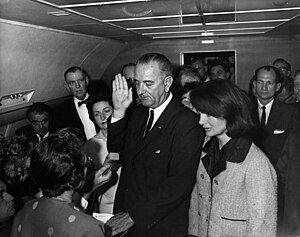
|
Lyndon B. Johnson taking the U.S. Presidential Oath of Office on Air Force One following the assassination of John F. Kennedy in Dallas, Texas on November 22 1963. He was sworn in by Judge Sarah T. Hughes, making him the first President sworn in by a woman. Johnson was not sworn using a Bible; none could be found aboard the plane. A Roman Catholic Missal was discovered in Kennedy's desk, and this book was used during the swearing-in ceremony. Photo credit: Cecil Stoughton, White House Press Office |
November 23
[àtúnṣe àmìọ̀rọ̀]| Àwòrán Ọjọ́ Òní | |

|
The pupae of western honey bee drones. After passing through their larval stage within cells of the honeycomb, and continue there until they develop into their adult form. Due to the protection this provides, the pupae do not need to be surrounded by a chrysalis or other shell, but instead have their legs and proboscis free. Photo credit: Waugsberg |
November 24
[àtúnṣe àmìọ̀rọ̀]| Àwòrán Ọjọ́ Òní | |
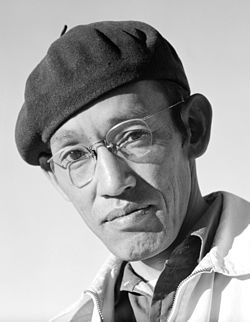
|
Portrait of Tōyō Miyatake (1896–1979) by Ansel Adams, 1943. Miyatake was a Japanese American internee and camp photographer at Manzanar War Relocation Camp during World War II. A studio photographer prior to his internment, Miyatake started taking photos at Manzanar with an improvised camera fashioned from parts he smuggled into the camp. His activity was discovered after nine months, but camp director Ralph Merritt supported the endeavor and allowed him to have his stored studio equipment shipped to the camp. Miyatake met and befriended Adams at the camp and in 1979 they published a book together, Two Views of Manzanar. Photo credit: Ansel Adams |
November 25
[àtúnṣe àmìọ̀rọ̀]| Àwòrán Ọjọ́ Òní | |
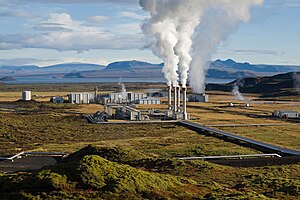
|
The Nesjavellir power plant, located near Þingvellir, Iceland is the largest of five such plants in the country. Because of the high concentration of volcanoes in Iceland, geothermal energy is so inexpensive that in the wintertime, some pavements in Reykjavík and Akureyri are heated. Photo credit: Gretar Ivarsson |
November 26
[àtúnṣe àmìọ̀rọ̀]| Àwòrán Ọjọ́ Òní | |

|
An oil on canvas portrait of George IV of the United Kingdom as the Prince Regent, by Sir Thomas Lawrence. In 1814, Lord Stewart, who had been appointed ambassador in Vienna and was a previous client of Thomas Lawrence, wanted to commission a portrait by him of the Prince Regent. He arranged that Lawrence should be presented to the Prince Regent at a levée. Soon after, the Prince visited Lawrence at his studio in Russell Square. Lawrence wrote to his brother that: To crown this honour, [he] engag'd to sit to me at one today and after a successful sitting of two hours, has just left me and comes again tomorrow and the next day. Artist: Sir Thomas Lawrence |
November 27
[àtúnṣe àmìọ̀rọ̀]| Àwòrán Ọjọ́ Òní | |
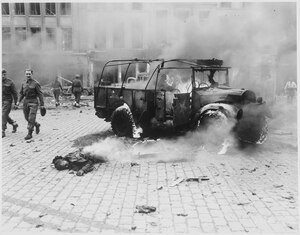
|
A young boy killed and set aflame by a V-2 rocket attack on the main intersection in Antwerp, Belgium, November 27 1944, on the main allied supply line to Holland. The V-2, one of the German Vergeltungswaffe, was the first ballistic missile and first man-made object to achieve sub-orbital spaceflight. Over 3,000 V-2s were launched as military rockets by the Wehrmacht against Allied targets in World War II. Photo credit: Ingeldew, T3c, U.S. Army |
November 28
[àtúnṣe àmìọ̀rọ̀]| Àwòrán Ọjọ́ Òní | |

|
|
|
A stitched panorama of the Willamette River as it passes through downtown Portland, Oregon. The bridges, from right to left, are the Sellwood, Ross Island, Marquam, Hawthorne, Morrison, Burnside, Steel (partially obscured) and Fremont. The mountains, from right to left, are Mount Hood, Mount Adams and Mount St. Helens. Photo credit: Cacophony | |
November 29
[àtúnṣe àmìọ̀rọ̀]| Àwòrán Ọjọ́ Òní | |

|
An animation of an eruption by the Tvashtar Paterae volcanic region on the innermost of Jupiter's Galilean moons, Io. The ejecta plume is 330 km (205.1 mi) high, though only its uppermost half is visible in this image, as its source lies over the moon's limb on its far side. This animation consists of a sequence of five images taken by NASA's New Horizons probe on March 1 2007, over the course of eight minutes from 23:50 UTC. Photo credit: New Horizons probe |
November 30
[àtúnṣe àmìọ̀rọ̀]| Àwòrán Ọjọ́ Òní | |

|
Varroa destructor, a type of mite, is seen parasitizing a honeybee host in this digitally colorized low-temperature scanning electron microscope image. Varroa mites threaten agricultural pollination directly by weakening and destroying bee colonies. They also mandate more regular management of hives that is both labor-intensive and expensive. Image credit: Erbe & Pooley, ARS |
